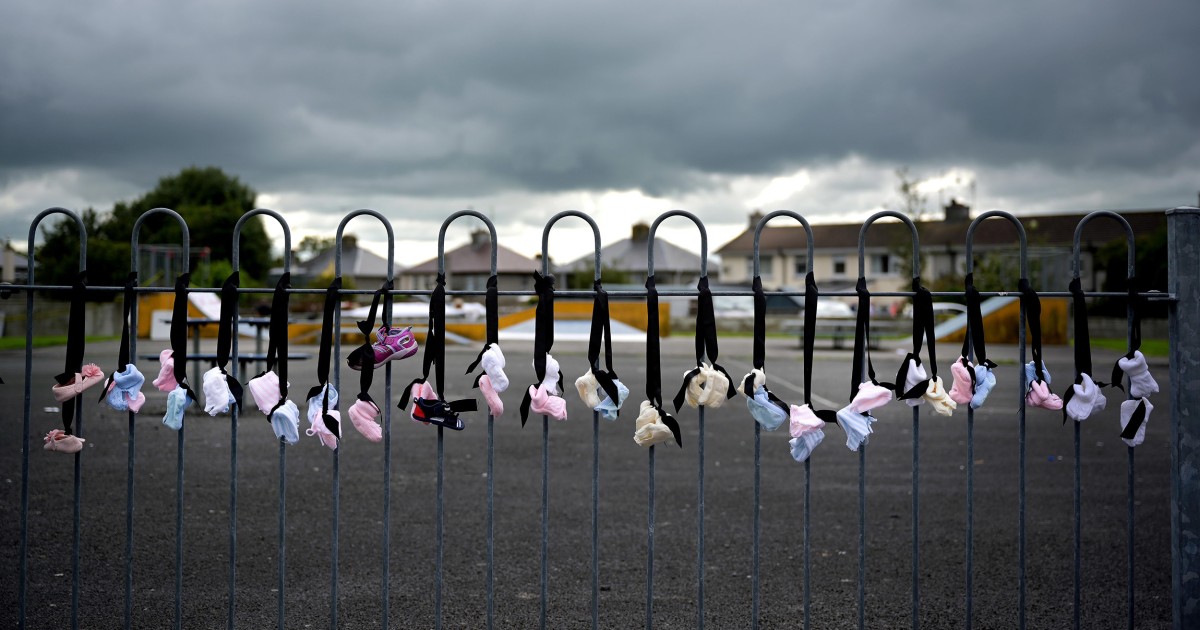LONDON – About 9,000 children died in homes run by churches in Ireland for single mothers, revealed a government report published on Tuesday. This is equivalent to 15% of all children who were born or lived in the investigated institutions for almost 80 years.
The 3,000-page report also described the emotional abuse that women were subjected to in so-called homes for mothers and babies, especially during childbirth.
“It seems that there was little kindness shown to them and that was especially the case when they were giving birth,” he said.
Homes for mothers and babies, many run by nuns and members of the Catholic Church, operated for most of the 20th century, the last closed house in 1998. They received state funding and also acted as adoption agencies.
The report concluded that the responsibility for the harsh treatment of women who gave birth outside of marriage lies primarily with the parents of their children and their immediate families. However, he added that the treatment was supported, contributed and tolerated by state institutions and churches.
“We did this to ourselves, we treated women exceptionally badly,” Irish Taoiseach, or Prime Minister, Micheál Martin, told reporters on Tuesday afternoon after the report was released. “The whole society was an accomplice to that.”
Martin added that the report revealed “significant failures” and should be a catalyst for social change.
The Mother and Baby House Investigation Commission also analyzed allegations that some children in the homes were used in vaccine tests, without parental consent for their participation.
The report identified seven of these vaccine trials, which involved “several children”, which took place between 1934 and 1973 in homes for mothers and babies.
Download the NBC News app for breaking news and politics
A former resident of one of the houses spoke to NBC News and said she was used as a “guinea pig” for vaccines at a home in Cork, before being adopted by a family in Philadelphia in 1961.
The report added that it was clear that there was no compliance with the relevant regulatory and ethical standards at the time, since consent was not obtained from the children’s mothers or guardians and the necessary licenses were not in effect.
All houses investigated have already been closed.
The institutions welcomed women who became pregnant outside of marriage, a taboo in the conservative country, and were seen as an attempt to preserve the country’s devout Catholic image. Now the houses are synonymous with a dark chapter in the country’s history, say Irish politicians and survivors.
Catherine Corless, a local amateur historian, first shed light on the issue of home abuse.
She discovered an unidentified mass cemetery in Tuam, in western Galway County, which led to an investigation that uncovered the remains of at least 700 children, buried between 1925 and 1961, a report found in 2017.
The Irish Children’s Department told NBC News, before the report was released, that it would be “a landmark moment for many thousands of former residents and their families”.
Before publication, however, details of the report were leaked to the media, generating outrage among the victims – including mother and son survivor Philomena Lee, whose story was portrayed in a 2013 film starring Dame Judi Dench.
Ireland has traditionally been a Catholic stronghold, but decades of abuse scandals have damaged the Church’s reputation and weakened its influence.
Pope Francis begged forgiveness for the scandal in the homes of mothers and babies during his first papal visit to the country in nearly four decades in 2018.
The Clann Project, an initiative by groups of survivors working to establish the truth about what happened in the homes, said before the report was released, that the government should recognize “the shame and stigma imposed on single mothers and their children by policies state and practices. “
He also called on the Government of Ireland to encourage the Catholic Church to recognize responsibility and to participate in the reparation process for victims.
Reuters contributed to this report.
Helena Skinner contributed.


